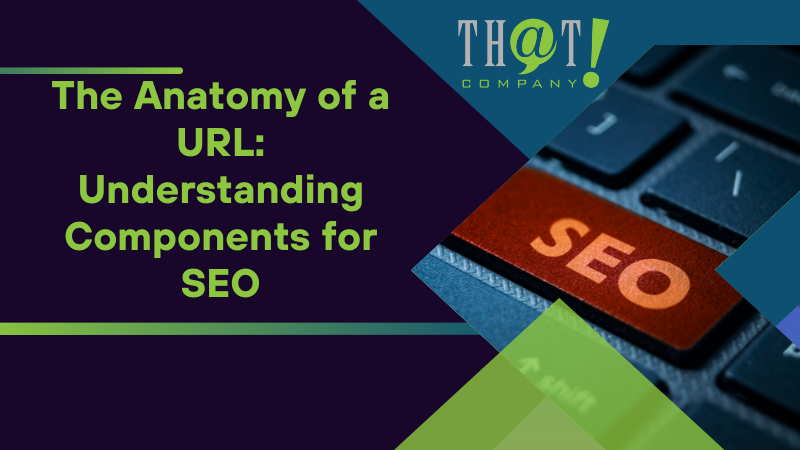
Navigating the world of SEO can be complex, but mastering the art of SEO URL best practice is a crucial piece of the puzzle for the success of your website. Straight to the point: URLs are more than just web addresses; they’re a fundamental aspect of SEO that can influence your website’s ranking and user satisfaction. This article provides clear, concise guidance on creating effective, human and search engine-friendly URLs that help pave the way to improved online visibility and engagement.
Key Takeaways
- For optimal SEO, URLs should be structured in a simple, logical, and readable manner with relevant keywords ideally positioned at the start, using hyphens as word separators and avoiding keyword stuffing to improve search visibility and user navigation.
- Static URLs, which are easier for search engines to index than dynamic URLs, should be concise yet descriptive, avoiding unnecessary parameters and words to maintain clarity and improve user experience while preserving link equity with proper redirects and canonical tags.
- URL structures should be tailored to the specific needs of different types of websites and remain adaptable to changing SEO guidelines, prioritizing factors such as user experience, security, mobile optimization, and delivery of high-quality content to future-proof the strategy.

Unlocking the Secrets of SEO-Friendly URL Structure
The first step to mastering SEO-friendly URLs is to grasp their significance. A well-crafted URL is the epitome of simplicity, logic, and memorability, making it easy for users to navigate the site and increasing the chances of the link being clicked. The key to a successful URL lies in its readability for humans, inclusion of relevant keywords, and the ability to guide search engine crawlers in identifying pages.
When we talk about SEO-friendly URLs, we often refer to their structure. A well-structured URL is instrumental in guiding search engines towards comprehending a page’s content. But it’s not just about the search engines. A logical URL structure is also easier on the eyes and more likely to be clicked on by users. Therefore, it’s a win-win strategy that can lead to better SEO performance and higher click-through rates. Search for the best local SEO solutions to make it easier.
Crafting Descriptive and Concise URLs
Creating informative URLs is akin to an art rather than a science. The goal is to create a URL that tells a story about the page content, enhancing the user experience and increasing click-through rates. The URL should be simple enough for a user to understand and remember, but also descriptive enough to provide search engines with an understanding of the page’s content.
Aligning URLs with page titles is a recommended practice as it sets clear expectations for the users and contributes to a cohesive and clear user experience. Moreover, including relevant keywords in the URL path not only makes it more user-friendly but also aids in search engine optimization.
The use of descriptive words relevant to the page’s topic makes the URL more meaningful to both users and search engines, thus influencing title links in search results.
Employing Keywords Strategically in URLs
Effectively utilizing keywords in URLs serves as a robust SEO strategy. Including targeted keywords can signal content relevance to both users and search engines, thereby enhancing SEO performance. Ideally, each page’s URL should include at least one researched keyword positioned at the start to enhance the page’s visibility in search results.
While incorporating keywords in URLs is vital, refraining from keyword stuffing is of equal significance. This will improve the user experience and the site’s search engine optimization. Overloading your URLs with multiple keywords can lead to search engine penalties and diminish the perceived trustworthiness of the site. Remember, optimized URLs that are short, include relevant keywords, and align with the site’s domain authority are more likely to rank well in Google searches and are considered more trustworthy by users.
The Role of Hyphens as Word Separators
In the domain of separate words separation in URLs, hyphens clearly triumph. They not only improve readability but also aid in SEO performance. Hyphens make it easier for both Google and users to understand the breaks between words, enhancing the readability of URLs.
Unlike underscores, hyphens are clearly recognized by search engines as separators. Using underscores or other characters can connect words together and confuse search engines, making hyphens more effective for URL structuring. Therefore, as a best practice, always use hyphens instead of underscores or other characters as word separators in URLs.

Need Help With SEO? That! Company is The SEO Agency That Other SEO Agencies Use
When it comes to SEO, not all providers are created equal. That! Company offers a unique white label SEO solution for agencies, offering comprehensive and customized digital services tailored to each partner’s needs. By incorporating elements from their white label pricing strategies in SEO, PPC, and social media services, That! Company, as a best white label digital marketing agency, enhances sales performance for its agency partners.
One of the standout features of That! Company’s SEO services is the value it places on partner time. By taking over time-consuming tasks like report creation and client meetings, they free up agency partners’ time, allowing them to manage a larger client load and focus on sales. Moreover, by working under the agency’s brand, they help enhance the agency’s reputation and credibility in the market, which in turn aids in attracting and retaining clients. Check their white label SEO packages and be amazed with what they can offer.

The Anatomy of a URL: Understanding Components for SEO
Gaining insights into the structure of a URL forms the bedrock of its optimization for SEO and user experience. A URL, or Uniform Resource Locator, is essentially a web address that leads to a specific file or resource on the internet. It’s composed of several components, including:
- The protocol
- The domain name
- The subdomain
- The top-level domain (TLD)
- The path
Each component plays a specific role in guiding users and search engines to the right destination.
The way these components are used and structured can greatly impact how a URL performs in terms of SEO. For instance, using a secure protocol like HTTPS can influence a website’s ranking in search results, while the choice of domain name and TLD can affect user perception and search engine categorization. Similarly, the path and parameters used in a URL can determine how effectively search engines are able to index a page and how easy it is for users to navigate a site.
Protocol and Domain Insights
In SEO, the protocol and domain of a URL hold significant importance. HTTPS, a secure communication protocol, instills trust in users and is favored by Google as a ranking signal. This sense of security is particularly important when users are engaging in transactions, as it helps create a perception of a safe and credible website environment.
The domain name also offers valuable insights. Modern practices recommend hiding the www prefix for a cleaner domain look and redirecting traffic from the www version to the naked domain. Furthermore, the choice of top-level domain (TLD) like .com or .edu can influence user perception and search engine categorization. This means that selecting a TLD that accurately represents the type of entity your organization is can significantly affect your SEO performance.
Path and Parameters: Best Practices
For both SEO and user experience, the path and parameters of a URL carry equal weight. The path directs users to a specific file or resource and is central to a URL’s overall structure. Meanwhile, URL parameters consist of key-value pairs that determine specific data queries. When multiple parameters exist, they are separated by ampersands.
However, handling these components requires caution. To avoid complications with tracking and creating duplicate content, it’s best practice to use URL parameters minimally, only when absolutely necessary. Furthermore, dynamic URLs, which often involve many parameters, can lead to search engines truncating these links, causing difficulties in distinguishing between different pages for indexing purposes.

Navigating URL Length and Readability for SEO
Achieving a balance is key in terms of URL length and readability. While there’s a maximum limit for browser rendering (2,083 characters), for optimal SEO, URLs should generally be kept under 256 characters. Short URLs not only rank higher but are also easier for users and search engines to read and understand, which can significantly improve SEO performance and usability.
This ties back to the idea of aligning URLs with their content. A URL that accurately reflects the page’s content enables users to anticipate the page’s content accurately, enhancing usability and trust. So, while it’s crucial to keep your URLs short and sweet, they should also be descriptive enough to give users and search engines a clear idea of what to expect from the page.
Balancing Brevity with Descriptiveness
Striking an optimal balance between conciseness and descriptiveness in URL structure is crucial. SEO-friendly URLs should:
- Provide a clear idea of the page’s content
- Avoid being generic or excessively long
- Improve SEO and user experience
- Include descriptive information about the webpage
The key is to be concise but still contain enough descriptive elements to convey the page’s purpose. This balance not only improves SEO performance on search engine results pages but also enhances user experience, leading to higher click-through rates with well-crafted anchor text.
In essence, your URLs should be just long enough to give both users and search engines a clear idea of what the web page is about, but not so long that they become cumbersome to type or read, ensuring that search engines understand the content effectively on web pages.
Avoiding Unnecessary Parameters and Words
Superfluous parameters and words can overcomplicate a URL, reducing its user-friendliness. Stop words, for example, should be removed to make the URL shorter and more readable. However, contextually important stop words can be retained, avoiding the risk of making the URL too vague or confusing.
Keeping URLs uncluttered enhances SEO performance and user-friendliness, leading to increased clicks. So, when crafting your URLs, focus on keeping them clean and concise. Remove unnecessary parameters and words, but ensure the remaining text is descriptive and accurately reflects the page’s content.

Dynamic vs. Static URLs: Which is Better for SEO?
In the sphere of SEO, the dynamic versus static URL debate has been persistent. Static URLs display the same content to every visitor and remain constant unless manually changed. On the other hand, dynamic URLs can change with each user interaction, adapting content based on factors like user preferences or actions.
Static URLs are generally preferred by search engines for faster indexing and may lead to better rankings when structured with static, keyword-rich paths instead of dynamic parameters. However, dynamic URLs have their place too. They facilitate personalized content delivery, leading to an engaging user experience and better conversions. They’re also well-suited for sites requiring frequent updates or managing large numbers of pages.

Simplifying Complex URLs: Techniques for Clarity
Complex URLs pose challenges to both users and search engines, making their simplification a necessity. Using lowercase letters in URLs is one way to avoid case sensitivity issues that can lead to duplicate content and 404 errors. Additionally, simple, concise, and semantically accurate URLs improve user experience and lead to higher click-through rates.
Redesigning URLs with excessive dynamic parameters into a more static and readable format offers several benefits:
- Reduces perceived site complexity
- Eases future modifications
- Improves loading times and user experience
- Decreases the potential for crawler problems and technical issues
Optimizing URL construction, including the default url, through minimal redirection hops is also recommended.

Redirects and Canonical Tags: Preserving Link Equity
In SEO, redirects and canonical tags are crucial for maintaining link equity. When altering a URL, a 301 redirect is crucial as it automatically directs users and search engines from an old URL to a new one, aiding in the maintenance of link equity and preventing dead links.
Canonical tags, on the other hand, help search engines identify the primary version of a page, thus addressing duplicate content issues and enabling improved search visibility for the designated canonical version. They consolidate ranking signals from multiple duplicate URLs into one canonical page, potentially leading to better crawl efficiency for search engines.
However, it’s important to note that Google may override these tags and choose a different canonical page based on its analysis of redirects, internal and external links, and sitemaps using Google Search Console, as well as considering google search results.

Designing URL Structures for Different Types of Websites
URL structure needs vary across different types of websites. Therefore, it’s crucial to tailor your URL structures based on the unique needs and purposes of your website to optimize for search engine visibility and user navigation. For instance, blogs should use descriptive, keyword-relevant URL structures and avoid including dates or ‘category’ in URLs for better clarity and evergreen content appeal.
E-commerce sites can improve SEO by:
- Grouping similar products in categories
- Using canonical tags to consolidate similar pages and avoid duplicate content issues
- Using a single domain and subdomain structure, as search engines may treat subdomains as separate entities affecting backlinks and trust value
- Spelling out numbers in URLs for clarity and to avoid confusion, with exceptions for years or specific dates.

Future-Proofing Your URL Strategy
As SEO is an ever-changing field, ensuring your URL strategy is future-proof becomes essential. This involves:
- Keeping up with Google’s SEO guidelines
- Staying updated on the latest algorithm updates
- Ensuring that your URL strategy remains effective in the face of changing SEO best practices.
A future-proof URL strategy must prioritize:
- User experience as a crucial ranking factor
- Security
- Mobile optimization
- Consistent delivery of high-quality content
Avoiding the inclusion of dates in URLs is one way to ensure the long-term relevance of content, as it can become quickly outdated and negatively affect the content’s ability to rank over time. Regular interaction with SEO professionals and referencing authoritative SEO resources like Search Engine Journal, Moz Blog, and Google’s Webmaster Blog are key for continually refining and evolving URL strategies.

Summary
In conclusion, mastering the art of creating SEO-friendly URLs is not an overnight process. It requires a deep understanding of the various components of a URL, an appreciation for the importance of descriptiveness and brevity, and a constant willingness to adapt and evolve based on changing SEO trends and guidelines. By applying the principles and best practices outlined in this guide, you can significantly optimize your URLs for search engines and users alike, boosting your website’s visibility, credibility, and overall success.

Frequently Asked Questions
What is the best practice for URLs for SEO?
When creating URLs for SEO, remember to keep them short and simple, use meaningful keywords, separate words with hyphens, and avoid including function words and verbs for clarity and value. Overcomplicating URLs can affect SEO negatively.
What is the best URL structure for local SEO?
For local SEO, it is best to use a silo or pyramid URL structure to categorize and link pages effectively. Additionally, ensure that the URL includes keywords, uses hyphens, avoids stop words and special characters, and maintains a directory-like format to be SEO-friendly.
How does the use of hyphens impact URL structure?
Using hyphens in URLs improves readability and SEO performance.
What is a future-proof URL strategy?
A future-proof URL strategy prioritizes user experience, security, and mobile optimization while keeping up with SEO guidelines and algorithm updates. This ensures consistent delivery of high-quality content for long-term success.























 Talk With Us
Talk With Us  Give Some Love
Give Some Love 


